What Does Incentive Marketing Look Like for a Digital Business?
In the 18th century, American retailers offered copper tokens to customers after a sale. These tokens could be redeemed for future purchases, giving customers a reason to choose their store over a competitor.
This is one of the oldest-recorded forms of incentive marketing: The use of rewards (like points, discounts, gifts, etc) to advertise a product and encourage customers to buy, and keep buying.
In today’s modern economy, you likely collect points at the gas station or take a punch card to your favorite coffee shop. The goal of encouraging business remains the same, but is facilitated by more sophisticated methods.
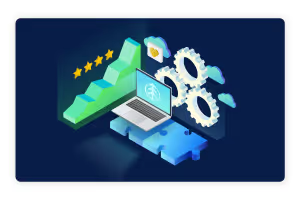 Because our impression of incentive marketing and loyalty programs is dominated by traditional brick & mortar retailers, it’s easy to assume that these strategies don’t have a place in the digital economy.
Because our impression of incentive marketing and loyalty programs is dominated by traditional brick & mortar retailers, it’s easy to assume that these strategies don’t have a place in the digital economy.
If you run a digital business, you might be thinking that because your brand exists “only on the web” that you don’t have enough touchpoints to be engaging customers or drive loyalty.
As you’ll learn in this post, existing on the web is actually one of your biggest advantages when it comes to building a loyal customer base. Being digital-first means having more ways to connect with, understand, and engage your customers.
At the same time, unique business models, economics, and customer environments mean that digital businesses need to consider loyalty differently than their traditional counterparts.
Advantages of a digital business for building customer loyalty
- Better data and measurable customer insights
When customers interact with your brand online, you can record their every action to better understand habits and preferences, and communicate accordingly. This takes out the guess-work and ensures you’re spending marketing resources effectively.
For example, knowing at what time of the year a specific product or service is most likely to sell means you can tailor upsell offers for the best chance of conversion. On a more granular level, this means making specific suggestions to increase the success rate of every retargeting campaign.
A grocery store has little to no ability to track consumer actions except for when the user reaches the checkout, while a digital business can improve conversion and retention rates by knowing exactly motivates customers to buy.
The Bond Loyalty Report from 2017 indicates that 87% of loyalty program members are open to having companies track and monitor details of their buying behavior in exchange for access to personalized rewards. It’s no secret that companies are able and willing to collect customer data, but the real value comes from how they can interlace it into every marketing campaign.
- Multiple points of customer contact
Rather than only interacting with a customer when they reach the checkout, a digital business can leverage channels like email marketing, in-app messaging, mobile notifications, app logins and help desk interactions to understand, personalize, and influence customer action.
With a more complete picture of the customer’s journey, you’re better equipped to predict a user’s next action. More opportunities to deliver relevant offers and messaging throughout the customer’s lifecycle means more chances for successful conversions, whether that’s downloading an app, submitting a payment, or renewing a subscription.
A main challenge in the digital economy is being able to build relationships with consumers without ever speaking to them. By leveraging each channel in the right way, whether through push notifications or emails, you can provide the personalization required to build trust between the buyer and seller.
- Easier access to consumer networks
The digital economy breaks down typical barriers that stand between your business and new prospects. To get your message in front of new users, all it takes are a few clicks to set up an online ad and propagate it to multiple places on the web.
When transactions are done digitally, consumers don’t need to wait for a coupon in the mail, or for their friends to pass on a referral code next time they meet.
Additionally, when individual customers boast to their own personal network of contacts, word-of-mouth marketing becomes easier than ever. This success and popularity of affiliate and influencer campaigns is largely due to one individual post reaching millions of people instantly.
- More ways to test and iterate
Without the need to keep track of physical punch cards or wait for customers to enter the store, you can adjust the details of your loyalty strategy with a few clicks and launch new campaigns in minutes.
As consumer preferences shift at rapid rates and your company’s access to resources fluctuates, you can quickly and easily make the necessary adjustments rather than having to ride out a strategy that is clearly not working.
By having the ability to regularly launch new programs, you’re able to test more possibilities, creating a better chance of success. Much like email marketing, sometimes you send an email that no one opens, but you can easily apply your learning to the next email for better results.
A truly digital marketplace can undertake initiatives that, if undertaken by a traditional retailer, would take years to implement rather than months or weeks.
So why aren’t loyalty programs more popular for digital businesses?
In today’s economy, you’re likely to see loyalty programs adopted by traditional businesses like airlines, gas stations, grocery stores and coffee shops. You’ll see less of an intentional focus on customer loyalty from digital-first products like apps and on-demand services.
This is in no way representative of how effective loyalty programs are in the digital economy.
The adoption of loyalty programs by traditional businesses is largely the result of them being established long enough to acquire a large customer base and reach meaningful market penetration.
They have realized the value of shifting their focus to increasing lifetime value and retention - something digital businesses are only beginning to address. Plus, loyalty programs have become common in many traditional business sectors, often making them a required “me-too” offering to remain on-par with competition.
We’ve mentioned before how this can make it seem like incentive-based loyalty programs don’t belong in the digital economy. In reality, this disconnect is just a result of the digital economy continuing to grow, having only been around since the birth of the internet.
The idea of loyalty is still new to many digital products and services, and we’re here to provide you with the best information, resources and tools to help you realize the ultimate benefit of loyal customers.
Why customer loyalty needs to be approached differently when going digital
Given the unique advantages of a digital business when growing a loyal customer base, it doesn’t make sense for them to copy the loyalty strategy of a traditional business that operates in a completely different way, and in a different environment.
While the goals of customer loyalty can be shared across every industry (ie. get more customers, get more profit, get a bigger share of wallet), there are several key differences between traditional and digital businesses that influence the development of customer loyalty.
We can break the differences into three main categories:
- Environment for interacting with customers
- Business model and how they make money
- Technology used to run the business
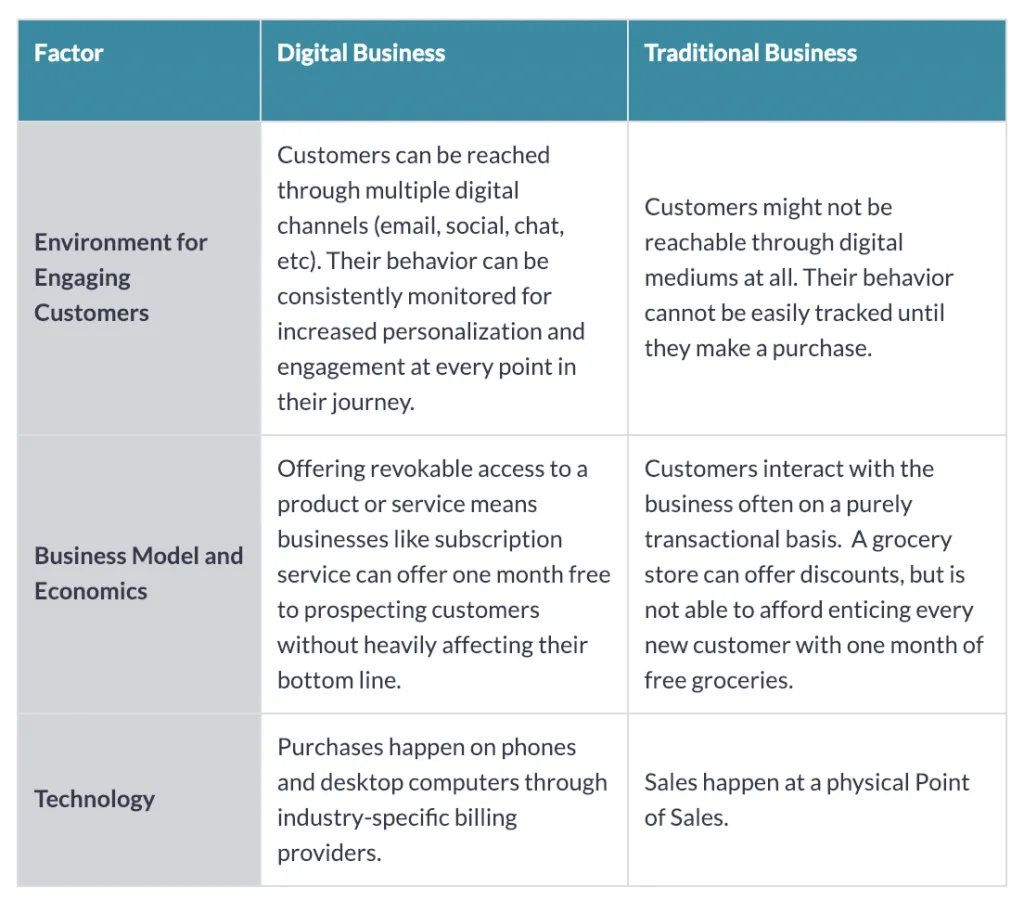
Adapted from the Digital Loyalty Academy
Together, these advantages and differences present an opportunity for digital businesses to design cost-effective, customer-centric loyalty strategies.
Digital Business Profiles: Incentive Marketing for E-Commerce, Subscription, On-Demand
Not every digital business is the same. Incentive marketing goals shift depending on whether a business operates on a transactional or subscription basis, or whether they ship physical goods or provide experiences only.
E-commerce
Sales & marketing goal: Grow new sales, and have customers return for subsequent purchases.
The success of an e-commerce business is dependant on the connectivity of buyers and sellers, and the buyer’s willingness to place trust in the seller without building a personal relationship.
While an e-commerce marketplace has instant access to virtually any customer, those same customers have access to endless consumer reviews and opinions that can quickly alter their opinion of a brand.
Building customer loyalty for your e-commerce business means not just giving your customers a reason to return, but a reason for them to share your message with friends and family.
Loyalty initiatives to try:
- VIP Programs: A VIP program offers exclusive rewards to your most loyal customers, giving them more reasons to spend with your brand. The benefits of a VIP program are reserved for your top-tier customers – those who have significantly contributed value to your product or service, usually in the form of repeat purchases. VIP rewards are a great way to increase a customer’s switching cost, considering they would need to abandon their elite status and progress if moving to a competitor.
- Influencer Programs: With access to reviews and comparisons online, consumers consistently report that salespeople are their least trusted source of information when making purchase decisions. Get influencers to share your product and reward them for every dollar earned, user registered or custom action taken based on their recommendations.
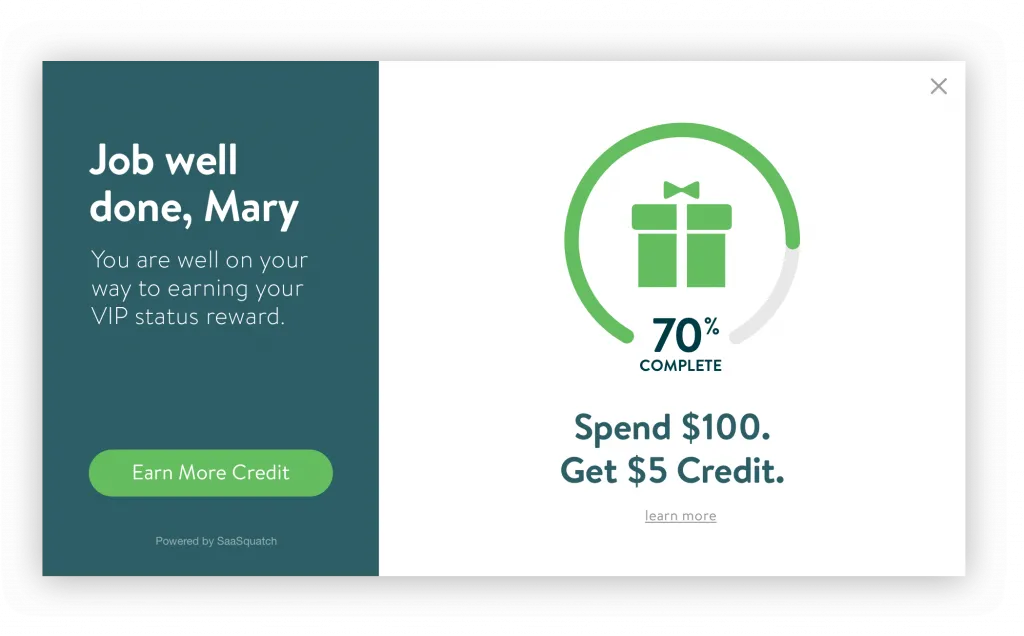
Subscription Service
Sales & marketing goal: Have customers enter into a recurring payment cycle and reduce churn.
When the default state of a customer is one of continuous payments, the success of a subscription model is dependant on the average lifetime value of each customer.
Because your goal is to build the foundation for a long-term customer relationship, it’s worth spending more than a single month’s subscription to acquire and convince them of the recurring investment.
Building loyalty as a subscription-based business therefore means lowering the initial degree of commitment, then focusing on the middle of the customer lifecycle to recover enough revenue for a positive ROI.
Loyalty initiatives to try:
- Acquisition Offers: Entering into a monthly contract implies a more substantial commitment than making a single purchase. Acquisition offers like free trials and welcome bonuses are a great way to help introduce customers to your value proposition and lower any perceived risk.
- Win Back Offers: When your business depends on extending customer lifetime value, win back offers like free months or discounted plan upgrades can be used to target old customers who have cancelled their subscription, or people who expressed interest but never bought.
Learn more about building a loyalty program for a subscription service here.
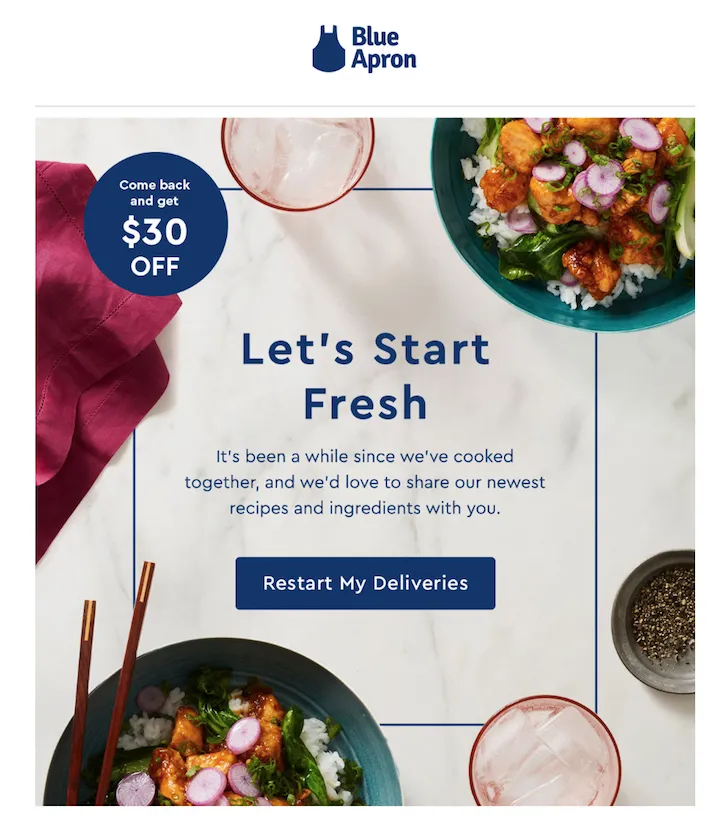
On-Demand
Sales & marketing goal: Encourage repeat customer usage and purchases, and drive adoption in new regions.
Consumers turn to on-demand services for convenient, fast, and simple experiences, and expect a flawless technical experience with your app or website during every use.
Immediate access to groceries, car rides and TV shows are the result of changing consumer preferences. However, the rapid growth and expansion of a service like Uber is mainly due to utilization by tech-savvy, early adopters.
Building loyalty as an on-demand service therefore means leveraging the satisfaction of early adopters and spreading awareness to the next wave of users.
Loyalty initiatives to try:
- Regional Offers: Reward new users who sign up for your service from a specific region to help with a staggered rollout. This is a great option for accelerating growth in new territories or holding off new competitive entrants.
- Referral Programs: As on-demand services seek to grow despite new competition, customer referrals are the most trusted form of marketing. Reward your customers with discounts or store credit for bringing in new business.
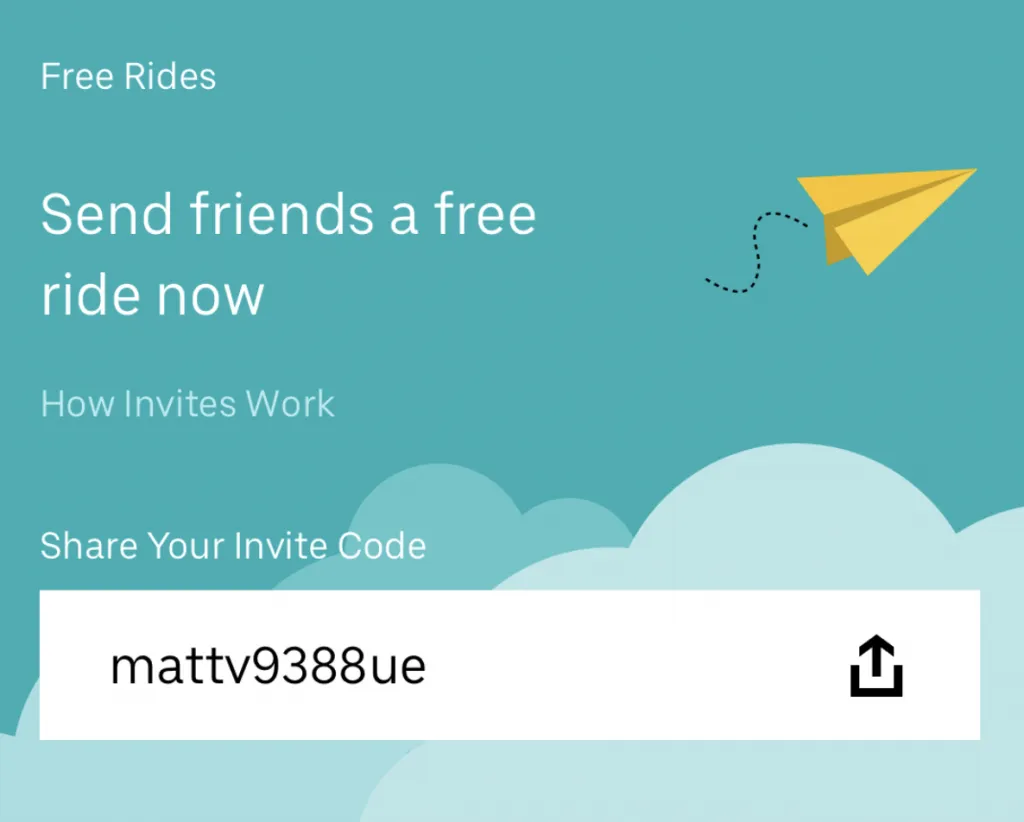
Final Thoughts
The rise of new business models and shifting consumer preferences mean that digital businesses need to think of loyalty in a different way. While we may see the bulk of incentive marketing done by traditional businesses, they’re not the only ones who can benefit from these strategies.
When you can keep up with a consumer’s preference to be digital without relying on punch cards, and facilitate interactions beyond a purchase every couple of weeks, there’s no reason to copy the static strategies of a traditional business.
To learn more about driving customer loyalty with an incentive marketing strategy, enroll in the Digital Loyalty Academy for free today.
